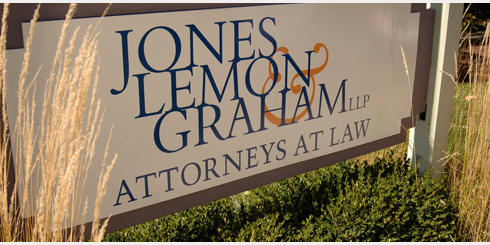by Christopher Graham and Joseph Kelly

Switching insurers? You’re considering switching the insurer for your company’s D&O, professional liability, or other claims-made insurance policies. Many insurers want the business. But, as is typical, their policies include a version of prior-and-pending-litigation exclusion.
Those exclusions generally apply to any claim based upon, arising out of, attributable to, or involving a suit or other proceeding filed or commenced before a new policy’s inception date. Similar exclusions in current insurers’ policies set the date as either policy inception dates or inception dates of policies those insurers first issued to your company.
But, as far as you know, there’s no pending or prior litigation or, if there is, your company reported it to a current or prior insurer. So you’re not concerned. You switch insurers, lower the premium and, you think, receive very similar or better coverage.
The gap: Unfortunately, neither you, nor your broker focus on a problem: the new prior-and-pending-litigation exclusions will apply if, before policy inception, a suit or other proceeding has been filed or commenced against your company, even if no one within your company knows about it.
As it turns out, moreover, your company has been sued, but hasn’t been served, and no one within your company knows about the suit or even about a potential claim. So no one can report anything to the existing insurers so their policies apply if your company eventually is served with suit papers.
Sure enough, service finally does occur when the new policies are in force and any extended reporting period or other deadline for reporting claims under prior policies has expired. You notify the prior and new insurers promptly.
The prior insurers won’t cover the suit because, under its Claim definition, the filed, but unserved suit isn’t a Claim or, even if it is, your company failed to report the Claim by the prior policies’ reporting deadlines and, thus, can’t meet that condition to coverage.
Although the new policies define Claim in a way that requires service of suit papers or at least policyholder knowledge of a demand, the new insurer won’t cover the suit because its prior-and-pending-litigation exclusion applies when a suit is filed before policy inception, regardless of whether the policyholder knows about it. You now realize that your company has a gap in coverage.
The AmerisourceBergen case: Policyholders, AmerisourceBergen and subsidiaries, International Nephrology Network (“INN”) and ASD Healthcare (“ASD”), found themselves with a gap in just that situation, as explained in AmerisourceBergen Corp., et al v. Ace American Ins Co., Case No. 2545 EDA 2013 (Pa. Super Sept. 15, 2014).
From May 1, 2006-2007, their primary professional liability insurer was Travelers. Their excess insurer was ACE. Effective May 1, 2007, ACE became primary and remained so for three consecutive one-year terms. ACE’s policies defined “claim” as “a civil proceeding against [a policyholder] seeking monetary damages . . . commenced by the service of a complaint or similar pleading” or a “written demand against [a policyholder] for monetary damages.”
ACE’s prior-and-pending-litigation exclusion applied to any “claim”:
alleging, based on, arising out of, or attributable to any prior or pending litigation, claims, demands, arbitration, administrative or regulatory proceeding or investigation filed or commenced on or before the earlier of the effective date of this policy or the effective date of any policy issued by [ACE] of which this policy is a continuous renewal or a replacement, or alleging or derived from the same or substantially the same fact, circumstance or situation underlying or alleged therein.
Unfortunately, when the policyholders switched to ACE as primary insurer, they didn’t know that Kassie Westmoreland had filed a “whistleblower” suit against them and her former employer, drug-giant Amgen, alleging violations of the federal False Claims Act, 31 U.S.C. §§ 3729 – 3733. Her qui tam suit, on behalf of the federal government, was filed in Massachusetts federal court, but under seal as the Act requires.
Whistleblowers—frequently employees of entities doing business directly or indirectly with the government—may sue on the government’s behalf and share in any recovery, but they must file their complaint under seal, without service, and serve the complaint and a “disclosure statement” on Justice Department or, for state false claims act claims, the state Attorney General. That process assures that the government can investigate before suit is disclosed to defendants and the public at large. The government may intervene in the case to pursue or dismiss it, or may allow the whistleblower to continue the case while the government monitors. If the government needs more than 60 days to investigate, it may seek a court extension of the seal period.
An extension is what happened in Ms. Westmoreland’s case—a very long extension. Ms. Westmoreland alleged that Amgen, with INN and ASD, used a kickback scheme to induce medical providers to prescribe Aransep, a drug Amgen manufactured to treat anemia. Amgen, INN, and ASD allegedly caused providers to make false representations material to paying Medicare claims for Aransep and conspired to get Medicare to pay false claims for Aransep. But neither INN, nor ASD, nor any other policyholder knew of the suit or any allegations when they switched primary insurers, effective May 1, 2007.
The Justice Department waited until February 2009, over 2 ½ years after Ms. Westmoreland filed her complaint, to advise the policyholders that it was reviewing Ms. Westmoreland’s allegations. In that same month, the Westmoreland court permitted the government to place a redacted copy of the unserved complaint on the electronic docket.
In September 2009, during ACE’s May 1, 2009-10 policy period, the Justice Department advised the court that it was not intervening in the case at that time. On October 30, 2009, also during that policy period, fifteen states and the District of Columbia filed a multi-state complaint in intervention against the policyholders and Amgen. Then in January 2010, the policyholders finally received service of original process.
The policyholders asked ACE to pay for the defense of the suit under the policy effective May 1, 2009-10. But ACE said the claim fell within the prior-and-pending-litigation exclusion, as based on or attributable to Ms. Westmoreland’s suit filed or commenced in June 2006, before the initial ACE primary policy’s May 1, 2007 inception. ACE also claimed that the policy’s “false, deceptive or unfair business practices” exclusion applied.
The trial court granted ACE a summary judgment based on both exclusions. While the policyholders’ appeal was pending, INN agreed to pay $15 million to resolve civil liability arising from its role in the marketing of Aranesp. Amgen ultimately paid over $700 million.
The appeals court affirmed summary judgment, based on the prior-and-pending-litigation exclusion. The policyholders argued on appeal that the exclusion didn’t apply because (1) although filed in June 2006, suit wasn’t served until during the May 1, 2009-10 policy period and (2) suit was filed after ACE’s one-year excess policy became effective on May 1, 2006. On the latter point, the policyholders stressed wording limiting the exclusion to when a prior or pending suit existed before “the earlier of the effective date of [the May 1, 2009-10] policy or the effective date of any policy issued by [ACE] of which [the May 1, 2009-10] policy is a continuous renewal or a replacement . . . .” According to them, ACE’s primary policy effective May 1, 2009-10 was a “continuous renewal or a replacement” of ACE’s excess policy effective May 1, 2006-07.
The appeals court rejected the policyholders’ arguments. It explained that the exclusion applied if suit was “filed or commenced” before the initial ACE primary policy’s May 1, 2007 inception, regardless of when service occurred.
And it explained that “[t]he 2009-10 primary coverage policy is a ‘continuous renewal’ of the 2007-08 and 2008-09 primary coverage policies.” But because the 2009-10 policy was primary, it wasn’t a “renewal” of ACE’s 2006-07 excess policy. Nor did it replace that excess policy. “The only policy that ‘replaced’ the 2006-07 [ACE excess policy] was the 2007-08 [ACE primary] policy.” Quoting definitions of “replace” and “renew” from Webster’s dictionary, the court explained that it “construe[d] ‘replacement policy’ to mean a ‘policy used instead of another policy’ and ‘continuous renewal policy’ to mean ‘a policy that is used again for consecutive policy periods’”.
The appeals court didn’t address the “false, deceptive or unfair business practices” exclusion.
Solutions for the gap: Perhaps if ACE matched the prior-and-pending date in the Travelers policy it replaced—a date presumably no later than the Travelers’ policy’s May 1, 2006 inception date—the policyholders wouldn’t have had a gap. But that would have been only because of the happenstance that Ms. Westmoreland’s sealed suit was filed in early June 2006. Having the new insurer match the prior insurer’s prior-and-pending date, thus, isn’t an adequate solution for the policyholder.
We suspect most underwriters wouldn’t like that solution either. That would be especially so if there’s a prior suit or other claim that could be followed up with “related” claims. Why would any underwriter want to risk having to pick up later “related” claims?
In commenting on the AmerisourceBergen case in his D&O Diary blog, Kevin LaCroix suggests amending the exclusion so it doesn’t “apply to False Claims Act complaints that were filed but not served prior to the effective date of the policy,” but then noted this would leave policyholders with other gaps because “there may be other types of lawsuits, beyond just False Claims Act claims,” where there’s delay between filing and service of suit. No doubt!
A better solution is limiting the prior-and-pending litigation exclusion to circumstances where the policyholder has knowledge of the pre-policy period suit or proceeding. In a recent post on the Professional Liability Underwriting Society blog, Fred Fisher, an attorney and president of Fisher Consulting Group, suggests an approach generally like this.
Kevin LaCroix also suggests that the “exclusion is meant to address separate litigation, not the lawsuit for which coverage is sought,” and the scenario in AmerisourceBergen “just isn’t the sort of situation to which the prior and pending litigation exclusion was meant to apply.”
In fact, if a claims-made insurer doesn’t want to cover a suit filed before its policy period, it ordinarily wouldn’t need to do so through any exclusion. Claims-made policies condition coverage upon a Claim first made during the policy period or an extended reporting period. When a suit is filed before the policy period, it ordinarily would fall outside of the policy’s insuring agreement and, thus, wouldn’t be covered. Although Ms. Westmoreland’s suit was filed before inception of ACE’s primary policy, it didn’t qualify as a claim made before policy inception because a claim, as defined, required service. So ACE couldn’t argue that her suit was outside coverage as a claim made before policy inception.
The more usual scenario for the prior-and-pending-litigation exclusion is found in HR Acquisition I Corp. v, Twin City Fire Ins. Co., 547 F.3d 1309 (11th Cir. 2008), relied on by the AmerisourceBergen court. In HR Acquisition, the pre-policy period litigation was a complaint under the federal False Claims Act filed under seal and unserved, alleging fraudulent Medicare claims. But the policyholder wasn’t seeking coverage for the False Claims Act suit; it sought coverage for a subsequent, shareholder derivative suit based on the same conduct and filed during the policy period. Any Loss from the derivative suit was excluded under the policy’s prior-and-pending litigation exclusion, as Loss based upon, arising from, or in any way related to a suit or other proceeding against an Insured which was pending or existed prior to the policy inception date, or the same or substantially the same facts, circumstances, or allegation as are the basis for such suit or proceeding.
Based on what’s in the appeals court’s opinion in AmerisourceBergen, it doesn’t appear that the policyholders argued that ACE’s prior-and-pending litigation exclusion was limited to circumstances, as in HR Acquisition, where the suit filed during the policy period was separate from the suit filed before then. That may have been because of the wording of the exclusion or also because, within the ACE policy period, multiple states had filed a consolidated complaint in intervention and even Ms. Westmoreland was on her fourth amended complaint.
Kevin also suggests that “the best way to avoid [the] problem [in AmerisourceBergen] would be to line up the language between the prior and pending litigation exclusion and the definition of claim, so that both require service of process.”
In that regard, the following prior-and-pending-litigation exclusion appears along those lines and also consistent with what Kevin suggests as the exclusion’s purpose—namely, as limited to a policy-period claim that’s related to a different pre-policy period claim:
The Insurer shall not be liable under this Coverage Part to pay any Loss on account of, and shall not be obligated to defend, any Claim made against any Insured: . . . Based upon, arising out of, or in any way involving any Claim against any Insured which was pending on or existed prior to the respective Pending or Prior Date stated in the Coverage Schedule of the Declarations, or the same or substantially the same fact, circumstance or Wrongful Act alleged or underlying such prior Claim . . . . (Emphasis added).
Similar to ACE’s policy in AmerisourceBergen, Claim as defined in the exclusion and elsewhere in the policy included a civil proceeding, but only if suit papers are served. Claim also includes any written demand, criminal proceeding, administrative or regulatory proceeding, certain investigations, and certain ADR proceedings—but only if the Insured is served with or otherwise receives the documents showing the matter was initiated.
By referring to a “Claim”—defined as a suit or the like with process or other notice—based upon, arising out of, or involving a Claim, later referred as a “prior Claim,” the exclusion necessarily contemplates two different Claims—the one for which coverage is suit and the one that triggers the exclusion.
Unlike ACE’s prior-and-pending-litigation exclusion in AmerisourceBergen, moreover, the exclusion quoted above also incorporates the policy’s Claim definition—requiring service or the Insured’s receipt of similar Claim documents—in referring to a Claim pending on or existing prior to “Pending or Prior Date”. So a policy period Claim based on, arising out of, or involving a pre-policy period filed, but unserved complaint, such as Ms. Westmoreland’s False Claims Act complaint, wouldn’t fall within the prior-and-pending-litigation exclusion. Her filed-but-unserved complaint isn’t a “Claim.” With an exclusion written like the one quoted above, the policy period derivative suit in HR Acquisition also wouldn’t have been excluded as a result of a pre-policy period False Claims Act suit that no policyholder knew about. The quoted exclusion, thus, may be the best solution for the gap.
Problems for those subject to false claims act suits: Besides the federal False Claims Act, at least 30 states and the District of Columbia have a version of a false claims act, authorizing claims by or for the government against government fraudsters, though proof of “reckless disregard” will suffice.
Policyholders subject to “whistleblower” suits include those doing business with the federal or any state government, or those doing business with those direct government contractors. Health care providers receiving payments under Medicare, Medicaid, or other government insurance programs have been frequent targets.
So have pharmaceutical companies, such as Amgen in the Westmoreland case, because an Amgen-manufactured drug, Aransep, was purchased under government insurance programs. Policyholder, INN, claimed to be a group purchasing organization for medical practice groups. While ASD, was a wholesale drug distributor.
Others targeted by false claims act suits include contractors and subcontractors for state and federally funded construction projects, educational institutions receiving student loan funds such as the University of Phoenix, financial institutions, and defense contractors. It was rampant fraud by defense contractors supplying military goods to the Union Army during the Civil War that lead Congress in 1863 to enact the federal False Claims Act.
Although the “gap” problem in this post isn’t limited to policyholders subject to “whistleblower” suits, they may be subject to a greater “gap” risk, because of the unique procedural requirements for those suits. In some matters, presumably those that are more complex, such as Westmoreland, the complaint may be sealed and, thus, unknown to the policyholder for a year, two years, or even more.
Moral of the story: whether susceptible to false claims act suits or not, mind the pending-and-prior litigation gap when switching D&O, professional liability, and other claims-made policies.
Tags: claims made, professional liability insurance, E&O, management liability, directors and officers liability insurance, D&O, EPL, fiduciary liability, prior and pending litigation exclusion, definition of claim, coverage gap, Pennsylvania, False Claims Act, qui tam








